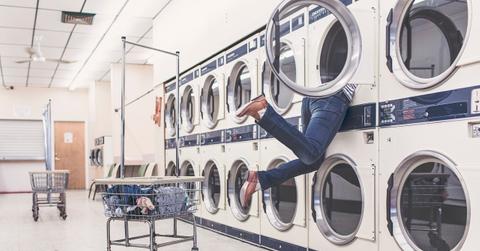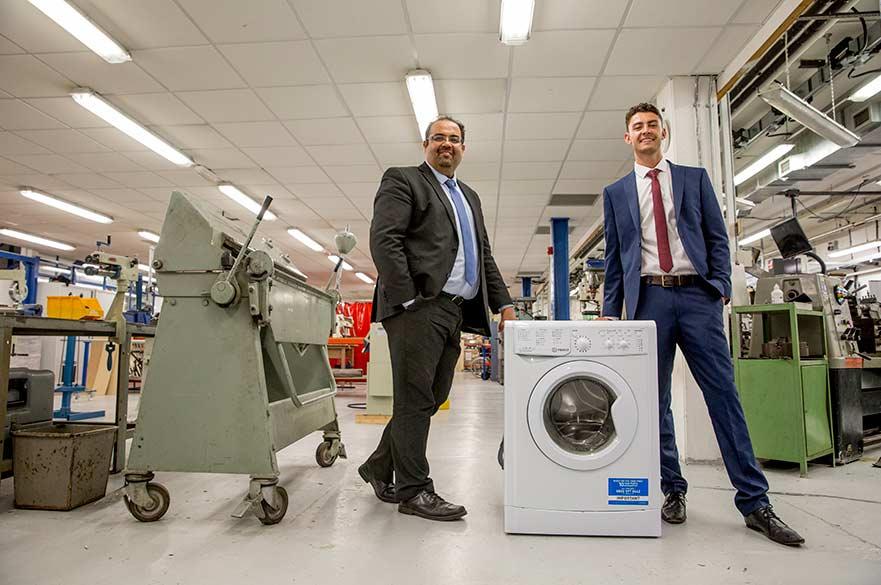The Surprisingly Eco-Friendly Reason To Put Plastic In Your Washing Machine
There's still a major reason to keep plastic around. Researchers have found that adding a plastic container to a washing machine is just as effective as the heavy concrete block most of them contain, making them lighter and more eco-friendly.
Updated May 26 2019, 7:07 p.m. ET
Installing washing machines is not always the most pleasant task. Often, they contain concrete blocks that keep them from flinging around during a rapid spin cycle, which makes them one of the heavier appliances in your home. In spite of being practical, the weight of these machines creates a burden on the environment in multiple ways, but a group of researchers at Nottingham Trent University recently discovered an interesting solution: Plastic.
Instead of using a concrete block, a chunk of hollow plastic is placed at the bottom of the washing machine. It weighs only 6.5 pounds compared to a concrete block that averages 55 pounds, significantly reducing the weight of the machine. How can something that weighs this little prevent a washing machine from shaking? Easy: It’s filled up with water after the unit is installed.
Dylan Knight, a 22-year-old undergraduate that’s part of the three-man research group, explained in the university’s report how the plastic was able to counter the fast speeds of a washing machine’s cycle. He also explained how there have been plenty of issues with using concrete in the past.
“We found [the plastic container] worked as good as a concrete counterweight, stopping the spinning drum from heavily vibrating the machine...Concrete is actually quite bad for the environment due to the CO2 released when it is produced. The use of concrete is also the reason why washing machines are normally very heavy to move.”
That’s why removing concrete from the washing machine is twice as good for the environment. When all these heavy machines are loaded onto trucks, that increases the weight of the vehicle, meaning that it needs to use more gas to transport them. Replacing those units with a plastic container would decrease each one of them by 30 percent, significantly cutting down on their overall weight and impact.
According to the school’s report, there are 3.5 million washing machines sold annually in the United Kingdom. Should all of those feature a new plastic container, “the carbon savings would equate to around 44,625 tonnes (around 49,190 US tons) of CO2 and a reduced fuel consumption of 183,750 litres (around 48,540 gallons).”
Professor Amin Al-Habaibeh, also in the research group, praised the findings they had by explaining all the benefits with the new system, saying, “This sustainable solution not only reduces cost and energy needed for transportation, but also provides ergonomic and health and safety benefits to those physically handling washing machines.”
In 2016, there were 9.67 million washing machines shipped in the United States. That number continues to rapidly climb up annually -- it was at 8.18 million just four years ago. While plastics have their own share of problems, a proper recycling system for these containers would be valuable. We’ll see what’s in store for the new technology as it graduates from its research period.

